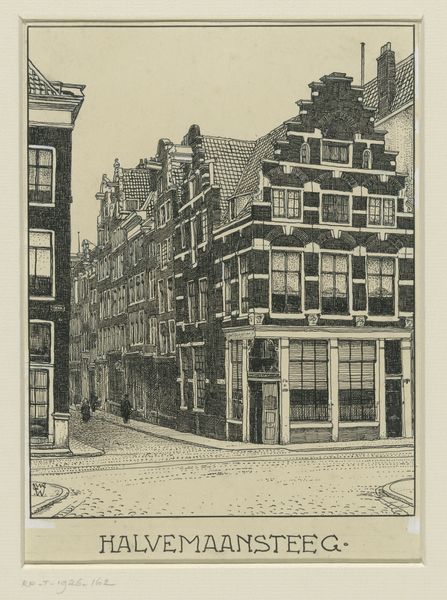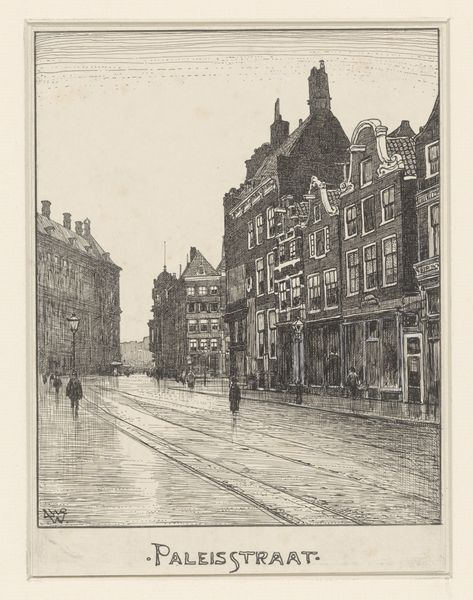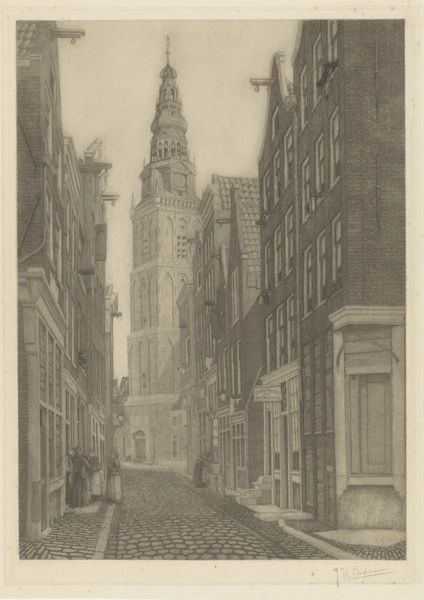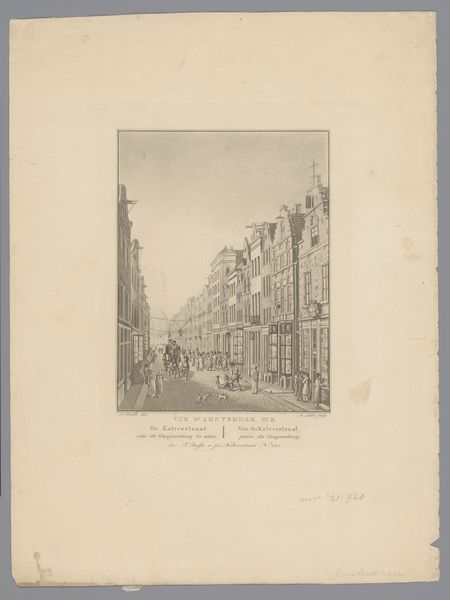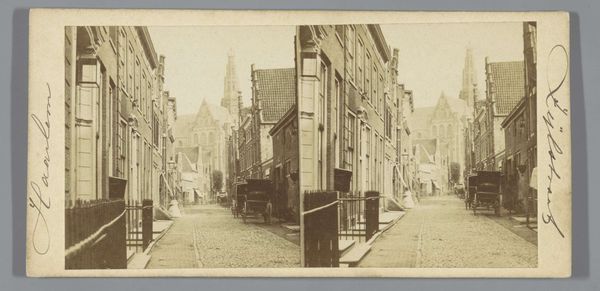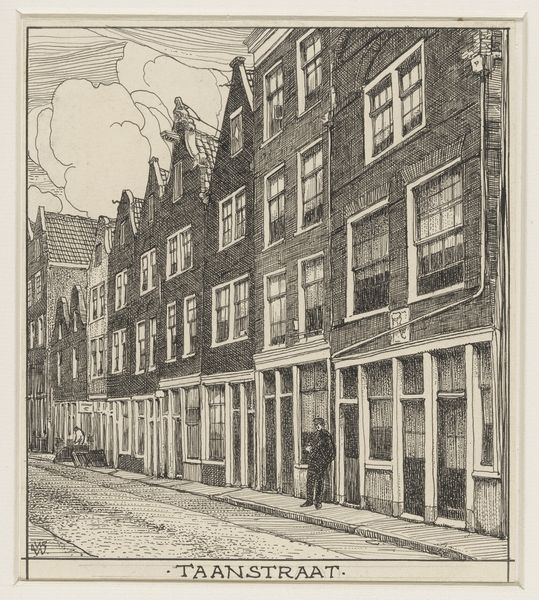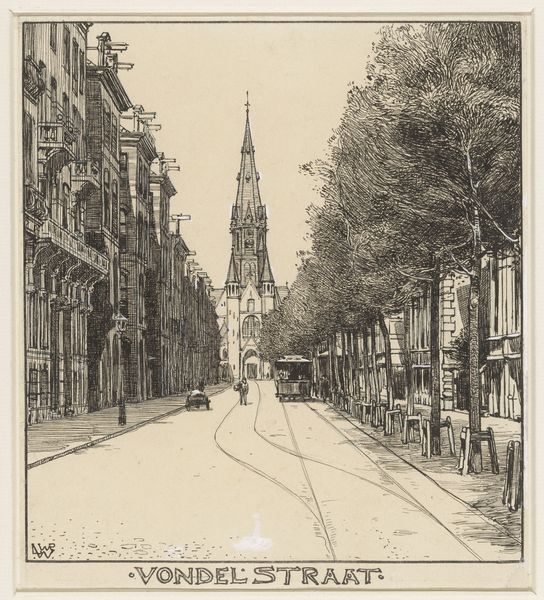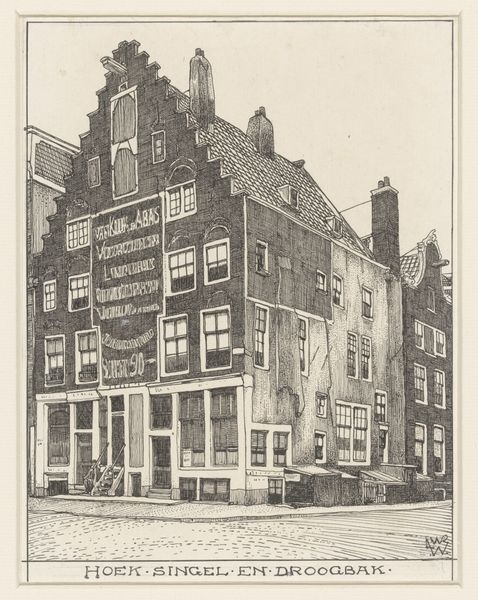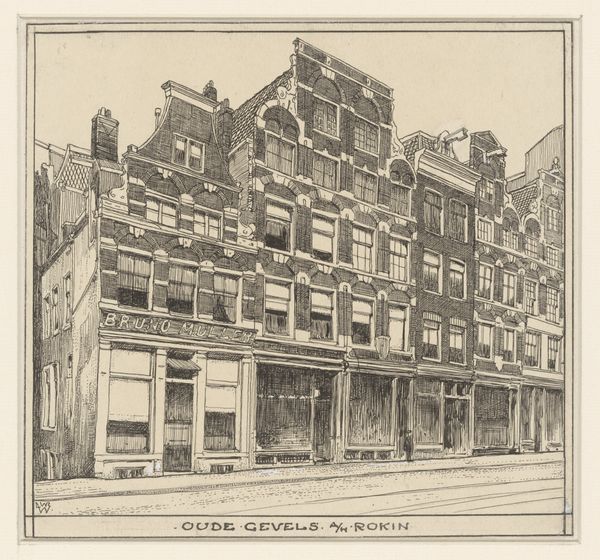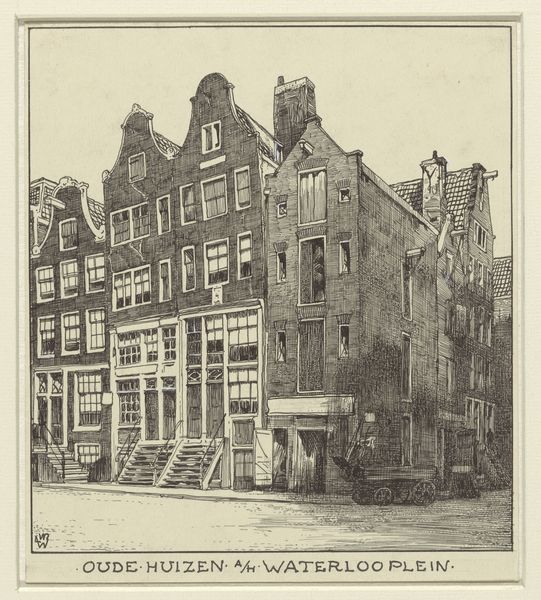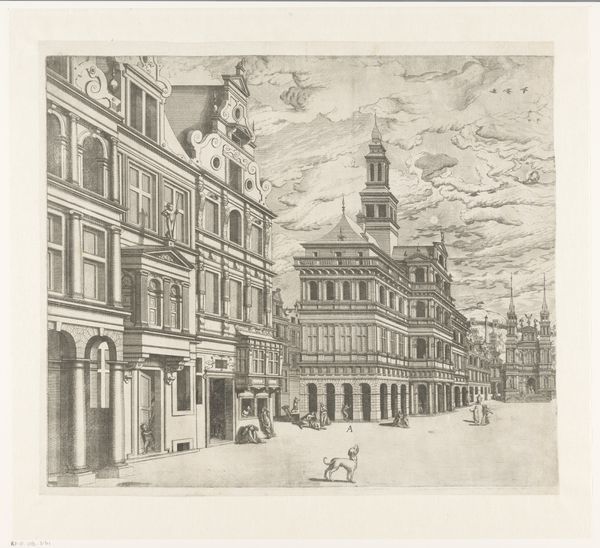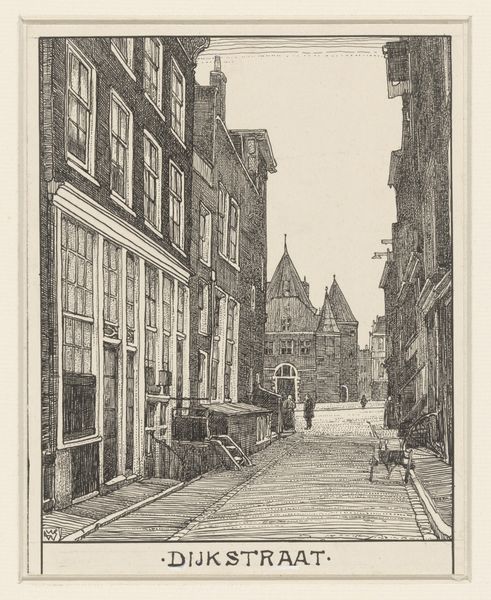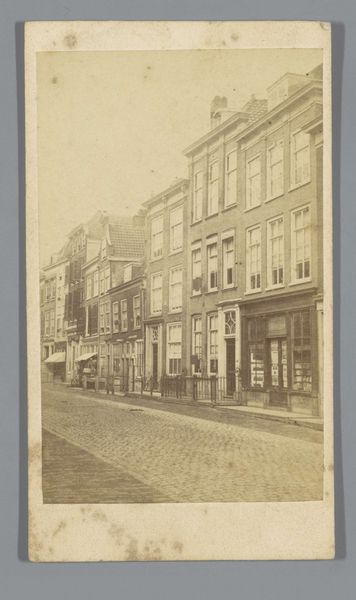
drawing, paper, ink
#
drawing
#
dutch-golden-age
#
paper
#
ink
#
cityscape
#
street
Dimensions: height 145 mm, width 173 mm
Copyright: Rijks Museum: Open Domain
Curator: Instantly, I am struck by how incredibly intricate this cityscape drawing is. Editor: Yes, Willem Wenckebach created this work, titled "De Joden Breestraat te Amsterdam", sometime between 1870 and 1926. It’s rendered in ink on paper, and it’s quite fascinating, when we consider its depiction of an iconic street. Curator: The name, “Jodenbreestraat,” translates to "Jewish Broad Street." It is incredibly atmospheric, wouldn't you say? You can almost feel the hustle and bustle. There is such a high level of activity! I immediately see signs of old Amsterdam. Editor: The imagery Wenckebach chose offers a revealing glimpse into Amsterdam’s history and social dynamics. The Jodenbreestraat was the heart of the Jewish quarter. In Dutch art, there's an incredible emphasis placed on detailed depictions of civic life; what kind of statement do you feel this makes here? Curator: Given the period during which Wenckebach produced the work, depicting this particular street underscores the role of the Jewish community in the city's economic and social life. Images of such spaces reinforced a sense of civic pride and national identity that embraced diverse communities... at least ideally. Editor: It becomes a loaded image in hindsight, doesn't it? Pre-dating some of the more tragic moments in the history of that neighborhood? Looking at the towering church in the background, do you read anything into that? Curator: Religious institutions often played a role in reinforcing community values. It would be hard to imagine an urban space without religious symbols, but in the face of the street name itself it perhaps calls into question how the community exists with its own internal dialogues. Editor: Precisely! The perspective and the street's inhabitants together highlight Amsterdam’s growth as a commercial hub. One can feel all the people depicted here contributing to this machine! There’s an argument for seeing this single street as symbolic of much bigger historical forces at play, as a hub of diasporic culture. Curator: Yes, but while a drawing like this offers a snapshot of a moment in time, we shouldn’t overlook how these images also shape how we remember the past, how the forces are filtered through artistic creation. Editor: An ink drawing then, but a complex portrait of the human stories etched into a single streetscape. Curator: A potent reminder that even everyday scenes carry layers of meaning and cultural significance.
Comments
No comments
Be the first to comment and join the conversation on the ultimate creative platform.
